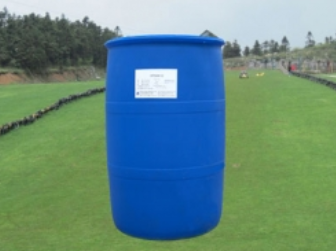Surfactant molecules are first adsorbed on the interface between the oil and the solution. Under the action of the lipophilic and hydrophilic groups of the surfactant, coupled with the convection and stirring of the solution, the oil gradually detaches from the metal surface and enters the solution. , in the form of very small balls to form an emulsion. When the surface of the part is being corroded by removing the scale, various harmful gases will be generated during the corrosion process, and acid mist will be generated when the gas escapes, which will have a great impact on the environment and equipment? If After adding a small amount of OP emulsifier in the pickling tank, a layer of foam can be formed on the surface of the pickling solution to prevent the escape of acid mist.

The current efficiency is extremely low (10% to 15%) during chrome plating, and insoluble lead anodes are used, and a large amount of hydrogen and oxygen are generated at the two electrodes after electrification, which is easy to produce harmful chromic acid fumes, which pollute the environment and endanger the health of operators. Cause corrosion of equipment To suppress the generation of chrome mist, a small amount of perfluoroalkane ether sulfonate surfactant can be added to the chrome plating solution to form a layer of foam on the surface of the solution during chrome plating, which inhibits the escape of chromium mist and ensures the operation It can improve the health of patients and reduce the consumption of chromic acid.
The surfactants used in electroplating play a direct and indirect role in the electrodeposition process. The essence of these effects is the surface activity of organic compounds on the interface between the electrode and the solution. With the advancement of science and technology, surfactants play a role in electrodeposition The application of it will be further valued and developed.
In the electroplating process, in order to improve the performance of the electrolyte and improve the quality of the coating, it is often necessary to add some additives, of which surfactant is one of the main varieties, it has smooth, bright, diffuse, change the physical properties of the coating, and inhibit the escape of acid mist And so on. Commonly used surfactants in electroplating include Pingpingjia, OP emulsifier, sodium lauryl sulfate, sodium methylene bis-naphthalene sulfonate, fluorosurfactant, fatty acid polyethylene oxide ester, polyethylene oxide castor Sesame oil etc.
Before electroplating, the metal workpiece must first be degreased and cleaned to make the surface clean. Otherwise, the deposition layer will not bond well on the surface, and even the deposition layer will not be obtained in severe cases. The oil on the surface of the workpiece includes animal, vegetable grease and mineral oil. Vegetable oils can undergo saponification reaction in alkaline solution to form water-soluble soap and glycerin and remove them; while mineral oil or other unsaponifiable oils cannot be chemically decomposed by alkali, they must be removed from the metal surface with the help of surfactants. Removed during degreasing.